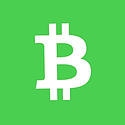Outlook:
We get retail sales today, forecast up 0.3% for the Nov month and perhaps as much as 0.5%. This is one of those times when market action is driving sentiment, not data. This is when we see the so-called intermarket correlations that don’t really exist in the real world of supply and demand but poke their head up when markets are making extreme moves. Mindless contagion is what makes disorderly markets, and we are skating close to a state of disorderliness.
But the recovery in the oil price overnight, however minor, suggests normalcy and could be the key reason US equity index futures point to a good opening this morning. As noted yesterday, there is an under-current that it can’t be “just” supply that is driving oil down—there must be a shortfall in demand, too. In other words, the US economy will be joining the rest of the world in slower growth, deflation, and possibly recession. To the degree there is a rise is risk aversion on these grounds, the drop in US yields is understandable. And yet, as far as we know, the Fed remains on track to get rid of “considerable period” and to start plowing the field for a rate hike in mid-2015. These two themes are in opposition and mutually exclusive in the sense that they can’t both be factually true. That doesn’t mean the Fed can’t hike and the long yield remain soft—this is exactly what happened in the Greenspan years. The phenomenon is called the Greenspan conundrum. And mere data will not resolve it.
We could get a catalyst from a different direction—this weekend the European Court of Justice will rule on QE (technically, OMT or Outright Monetary Transactions). The German Constitutional Court had referred QE to the European Court of Justice last Feb 7, saying at the same time that it was not necessarily bound by the European Court’s ruling. Now we are on the brink of getting the European Court’s decision, due Dec 14. The ruling is described as “non-binding.” The big risk is that the court rules OMT not legal under the terms of the various treaties that underpin the EMU. But it’s barely a lesser risk if the court rules it’s legal, since the ruling is non-binding and members can still object. We have a rebuttal to that, too—Draghi has said, clearly, that a majority of votes will suffice. “I think we don't need unanimity," he said. This is considered a message directed straight at the Bundesbank.
The NYT reports today that the ECB chief economist Peter Praet said on Tuesday “that the bank would probably have cut interest rates at its last meeting if they had not already reached the zero limit. Mr. Praet said the bank would be taking a hard look at economic weakness at its next policy meeting on Jan. 22, especially for signs that inflation expectations may be slipping. It was important not to err in weighing how much central banks should discount the impact of low oil prices on headline inflation, he said, but policy makers were vigilant for any signs of broader disinflation. The bank could expand its asset purchases to prop up Europe’s struggling economy, a step Mr. Praet said may require it to begin buying sovereign debt. He said one precondition for such a step, a weakening in the eurozone economy, was already met. The other was a view that tools already in use were losing effectiveness.”
We may have that “loss of effectiveness” in the TLTRO today, where the pick-up was only a little more than the first one in September and not meeting the €150 billion hurdle. We therefore expect the tone of the commentary to turn euro-negative and PDQ--today and tomorrow, ahead of the court ruling on Sunday. Even if the court rules the ECB cannot do QE, the probability is high that Draghi is going to do QE anyway—the ruling is not binding. We have to wait for real action until the Jan 22 meeting, but traders don’t care—they trade on the story, not on the news. We would not go into the weekend long euros, even if we don’t much like the overall silhouette of the dollar.
This morning FX briefing is an information service, not a trading system. All trade recommendations are included in the afternoon report.
Recommended Content
Editors’ Picks
AUD/USD extends its upside above 0.6600, eyes on RBA rate decision

The AUD/USD pair extends its upside around 0.6610 during the Asian session on Monday. The downbeat US employment data for April has exerted some selling pressure on the US Dollar across the board. Investors will closely monitor the Reserve Bank of Australia interest rate decision on Tuesday.
EUR/USD: Optimism prevailed, hurting US Dollar demand

The EUR/USD pair advanced for a third consecutive week, accumulating a measly 160 pips in that period. The pair trades around 1.0760 ahead of the close after tumultuous headlines failed to trigger a clear directional path.
Gold bears take action on mixed signals from US economy

Gold price fell more than 2% for the second consecutive week, erased a small portion of its losses but finally came under renewed bearish pressure. The near-term technical outlook points to a loss of bullish momentum as the market focus shifts to Fedspeak.
Bitcoin Cash could become a Cardano partnerchain as 66% of 11.3K voters say “Aye”

Bitcoin Cash is the current mania in the Cardano ecosystem following a proposal by the network’s executive inviting the public to vote on X, about a possible integration.
Week ahead: BoE and RBA decisions headline a calm week

Bank of England meets on Thursday, unlikely to signal rate cuts. Reserve Bank of Australia could maintain a higher-for-longer stance. Elsewhere, Bank of Japan releases summary of opinions.